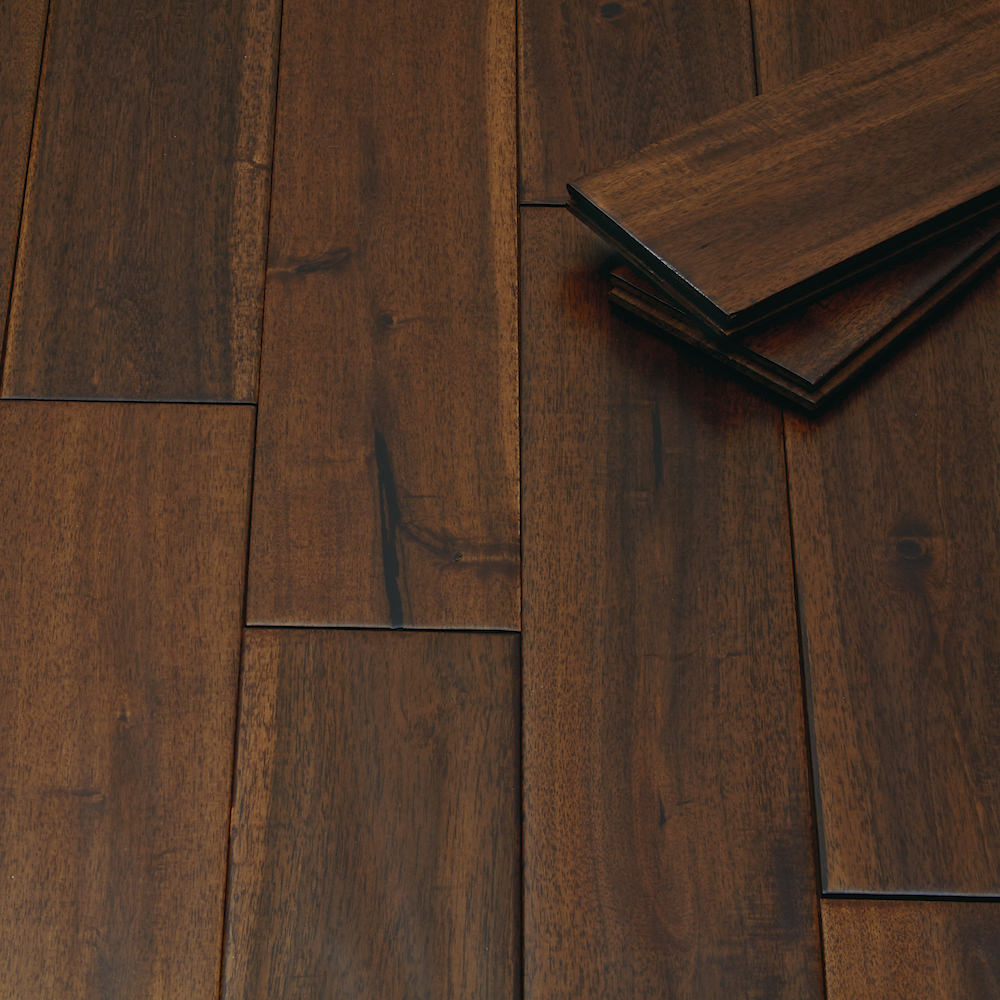
The type of wood used for solid and engineered wood flooring can vary to create unique and interesting finishes. Although Oak is primarily the prime wood type used for wood flooring, there are numerous other different wood flooring species whose beauty and benefits can’t be ignored.
Here I will talk through some key facts about a few of the most popular wood types to help you understand the benefits of each one that little bit more.
Oak
Widely used in the flooring industry, Oak wood is generally the most popular of the hardwood species. Due to it’s slow growing nature, oak is a highly dense and durable wood - perfect for wood flooring.
The vast amount of Oak available across the world means that it is relatively inexpensive. European oak tends to have fewer knots in than oak from different areas making a smoother, more refined finish. Siberian oak grows extremely slowly in its cold climate making it much denser and hard in nature.
Ring porous and straight-grained, an oak floor experiences only moderate seasonal movement and provides you with an authentic classic look. Naturally light in colour, its versatile nature means it can be tailored to a number of different finishes. Plus, its prominent grain makes it an extremely characterful wood.
Walnut
There are many species of walnut (including acacia), but one of the most commonly used species is Black Walnut from North America.
Generally darker in colour, walnut wood flooring gives off an air of elegance when laid. Ranging from a deep tan to intense coffee brown, it’s rich colouring makes it a highly valuable choice for flooring. Some walnut flooring also includes the pale yellow sapwood which adds an interesting juxtapose to the usual dark shades.
Walnut trees tend to be smaller than Oak trees which accounts for its higher price mark.
Slightly softer than oak, walnut is durable, straight grained, semi-ring porous and suffers a very small amount of seasonal movement.
 Exquisite Black Walnut - Super Matt Lacquered Engineered Wood Flooring
Exquisite Black Walnut - Super Matt Lacquered Engineered Wood FlooringTeak
Teak is a classic hardwood. Highly dense and durable in nature, Teak is lightweight and incredibly resistant to decay and rot due to its naturally high oil content.
Golden to dark brown, with a slight red tinge to its colour, Teak is renowned for its superb stability and strength. It is a highly desired wood with minimal seasonal movement. This highly expensive wood is diffuse-porous and usually straight-grained.
Acacia
Part of the Walnut family, acacia's use is found mostly in furniture production. There are two types of acacia, Big leaf and Small Leaf.
Big leaf acacia has less character than small leaf and is much lighter, softer (due to the fast growing nature of this type of acacia tree) and cheaper.
Although more expensive, small leaf acacia is much harder and full of character, with its board variation and abundance of patterns.
Rich medium golds to reddish brown in colour, this attractive diffuse-porous wood is highly durable and water resistant.
 Deluxe Handscraped Acacia - Super Matt Lacquered Solid Wood Flooring
Deluxe Handscraped Acacia - Super Matt Lacquered Solid Wood FlooringMahogany
This stunning coloured wood with its intense reddy-brown tones is very dense, durable and straight-grained. It is therefore extremely resistant to decay and water damage.
Mahogony is a diffuse-porous wood with very few knots and very little seasonal movement.
Mahogony wood looks its best with a glossy lacquer. The smooth coating adds more definition to the wood, enhancing the colour and allowing the light to reflect off the wood beautifully.
 Royal Mahogany Narrow - Super Matt Lacquered Solid Wood Flooring
Royal Mahogany Narrow - Super Matt Lacquered Solid Wood FlooringNow you know a little more about the wood flooring species available!
Remember all wood flooring should have gone through numerous treatment processes, to add extra protection before going on sale.














